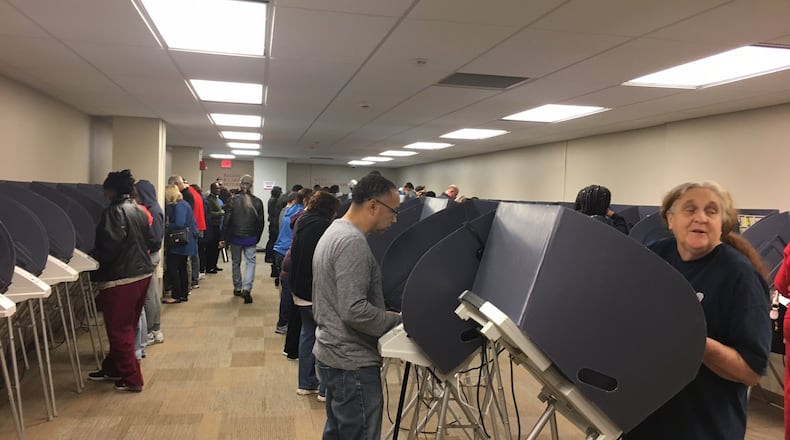The negotiations in the Ohio Senate committee considering Senate Joint Resolution 5 adjourned just after 10 p.m.
“Both sides still talking, just nothing more tonight,” said John Fortney, spokesman for the Ohio Senate Majority Caucus.
On one side is the GOP-controlled state legislature, which now holds the power to draw congressional district lines — the trump card in determining which party can ultimately win in Ohio’s 16 congressional seats.
Related: Debate over how Ohio should draw congressional districts heats up
On the other side is the Fair Districts = Fair Elections coalition led by the League of Women Voters of Ohio and Common Cause Ohio. The coalition is collecting hundreds of thousands of voter signatures to put a reform proposal on the November ballot.
The two sides have been at loggerheads for months. This week, Republicans made several changes to their redistricting plan. Democrats and the coalition rejected them as insufficient.
Related: Democrats reject GOP plan to change Ohio congressional districts
“It doesn’t address the critical issue of gerrymandering. It doesn’t stop them from still gerrymandering as many districts as they can right now,” said state Sen. Vernon Sykes, D-Akron, who is leading negotiations for Senate Democrats.
State Sen. Matt Huffman, R-Lima, who is leading the effort for the GOP, said without buy-in from a substantial number of Democratic lawmakers, he won’t put the proposal on the May ballot because he doesn’t think it would pass.
Both men say talks are ongoing.
Huffman said he doesn’t think putting competing proposals on the November ballot is a good idea.
Congressional districts are drawn every 10 years following the U.S. Census. Right now, state lawmakers approve congressional district maps and the majority party calls the shots. The state’s 16-member congressional delegation has four Democrats and 12 Republicans.
Fair Districts=Fair Elections, the coalition leading the effort to put an issue on the November ballot, argues that Ohio’s congressional districts are gerrymandered in a way that mostly favors Republicans even though the state is about evenly divided between Democrats and Republicans. The Fair District plan would give responsibility for drawing congressional maps to the Ohio Redistricting Commission.
In 2015, 71 percent of Ohio voters approved a new system for drawing state legislative district lines. Fair Districts’ plan builds off the new legislative redistricting system approved by voters.
Related: Issue 1 would change how legislative district lines are drawn
Ohio Gov. John Kasich and Secretary of State Jon Husted have called for reforms to make the system more fair. But Republican legislative leaders have said they want to keep the power to draw congressional districts within the Ohio General Assembly. There are legal cases challenging gerrymandered districts in Wisconsin, North Carolina and Maryland.
Related: Ohio may change the way congressional lines are drawn
Of Ohio’s 16 congressional seats, 13 have a double-digit percentage advantage in favor of the party holding the seat, according to a study by the League of Women Voters of Ohio. And since the 2012 election, no seat has changed hands from one party to the other.
At a Senate hearing Tuesday, state Sen. Joe Schiavoni, D-Boardman, admonished Government Oversight Committee Chairman Bill Coley, R-West Chester, for interrupting and “yelling” at Fair Districts volunteer Mia Lewis. After the meeting, Coley apologized to Lewis, who called his treatment of her “distasteful.”
She then argued with Coley, read aloud a dictionary definition of gerrymandering to the veteran lawmaker and laughed and said that he didn’t understand the definition.
Since 1999, several citizen- and lawmaker-led efforts to get rid of congressional district gerrymandering have failed to win approval, according to the League of Women voters of Ohio.
Other stories by Lynn Hulsey and Laura A. Bischoff
Portman, Jordan among passengers on train that hit a truck
Chief Justice to Ohio judges: Courts aren’t ATMs to collect fees
Poll shows DeWine and Cordray leading in their primaries for governor
Ohioans who lose driver’s license get help from lawmakers
WHAT DO YOU THINK?
Speak out on how you think Ohio should draw congressional lines on our Ohio Politics Facebook page.






